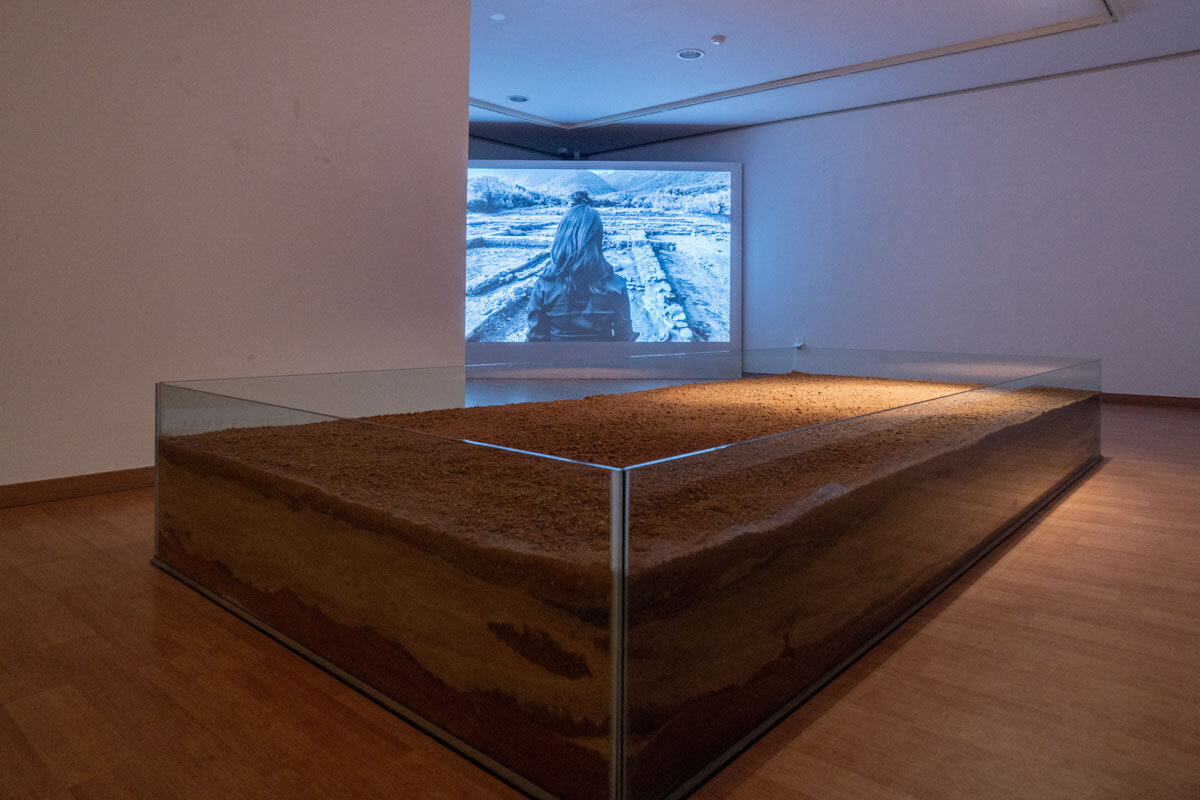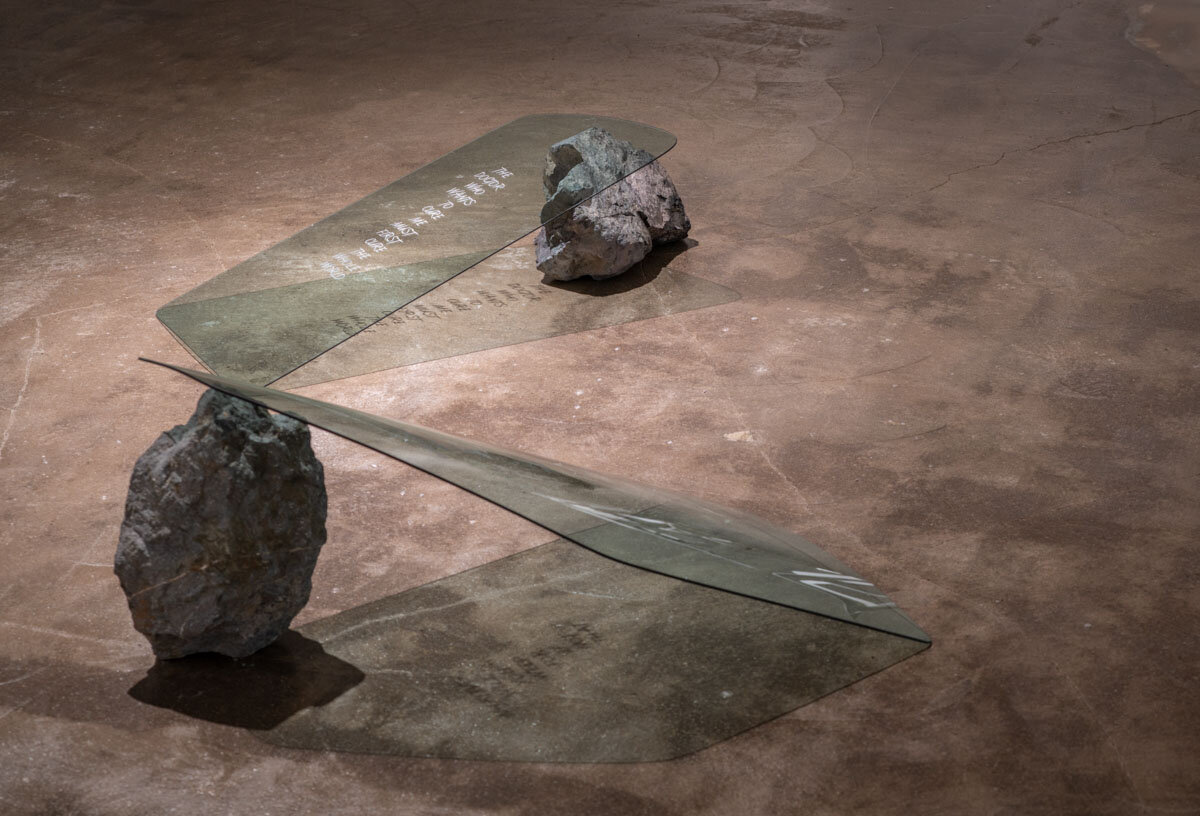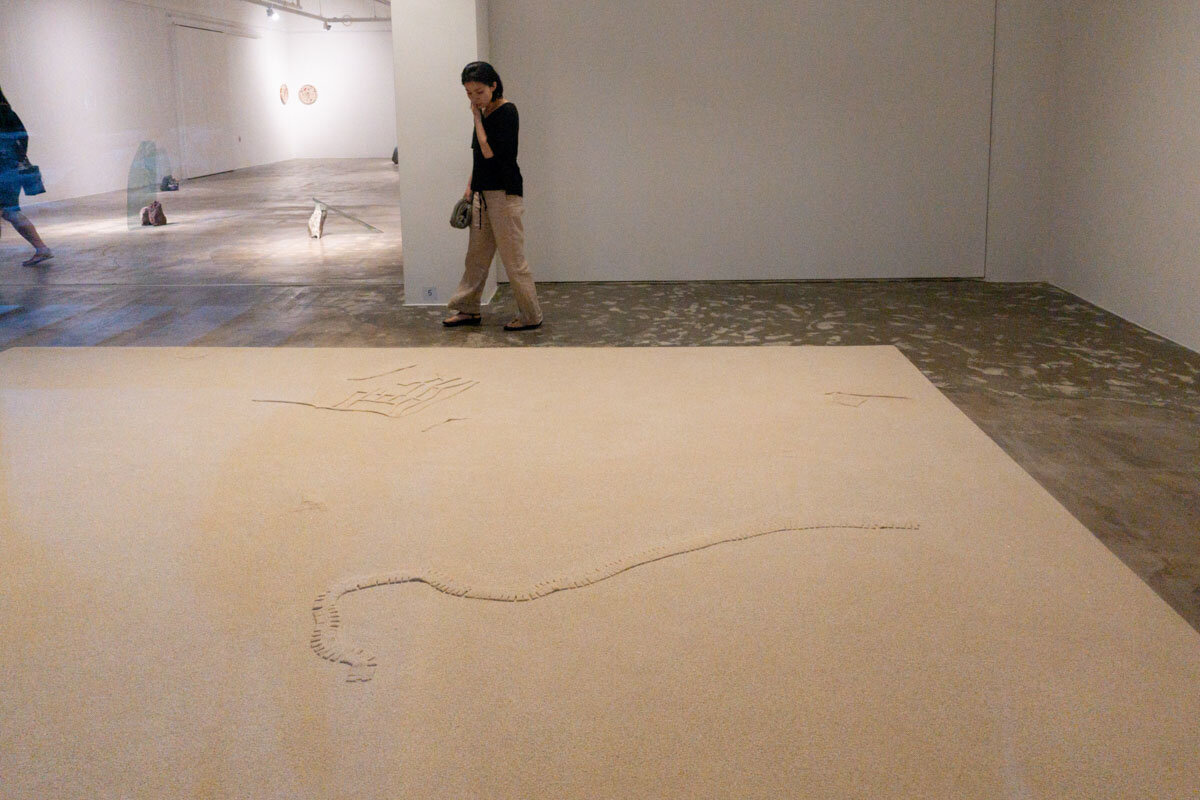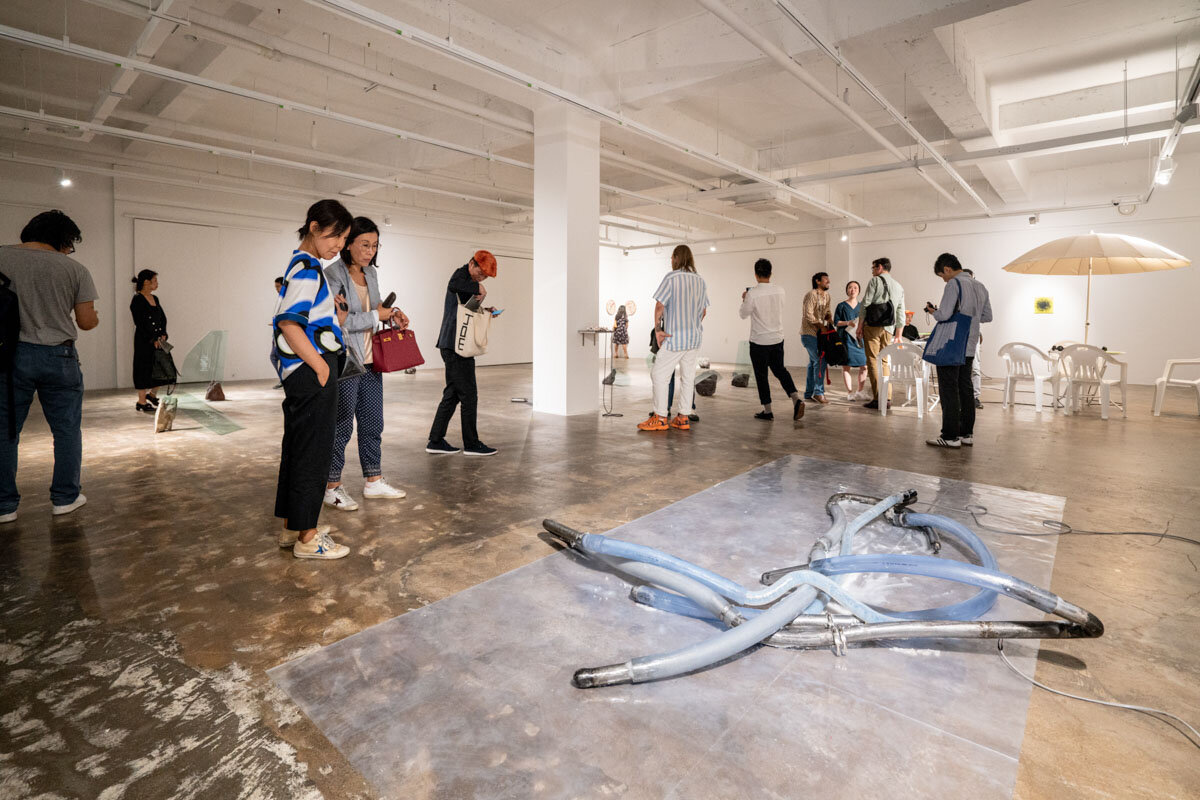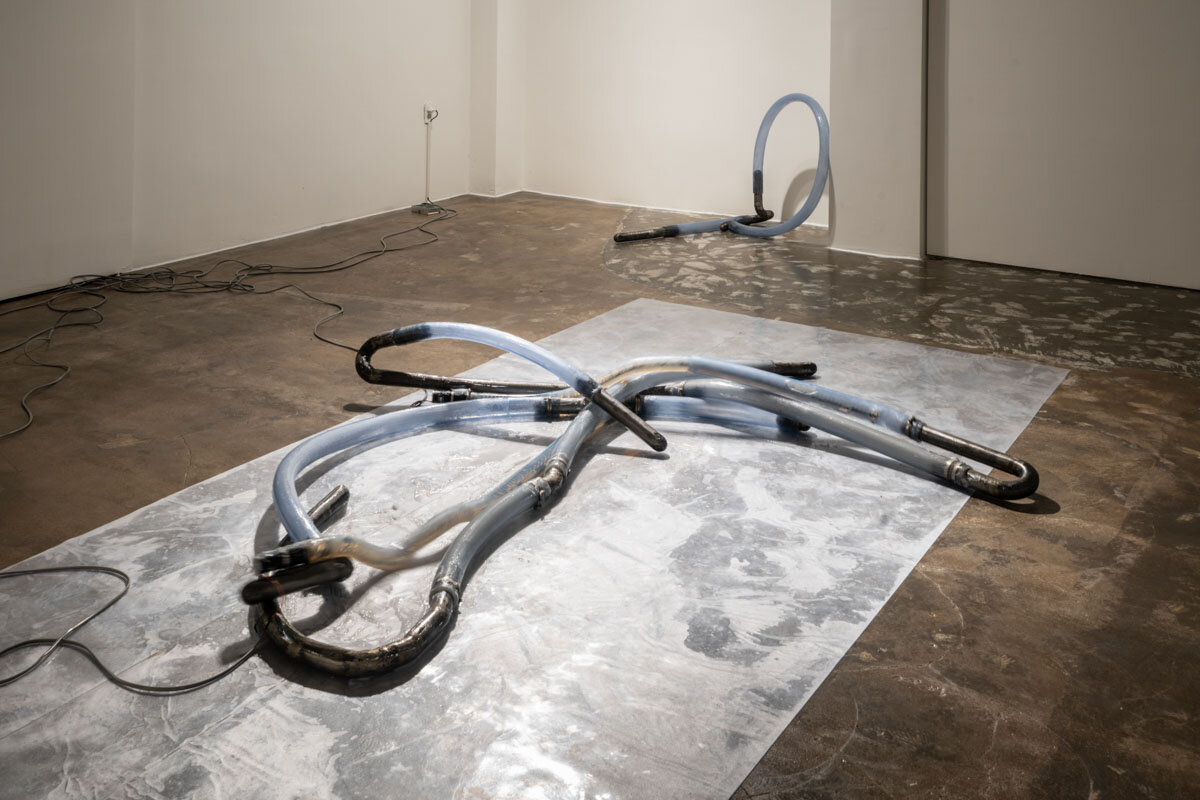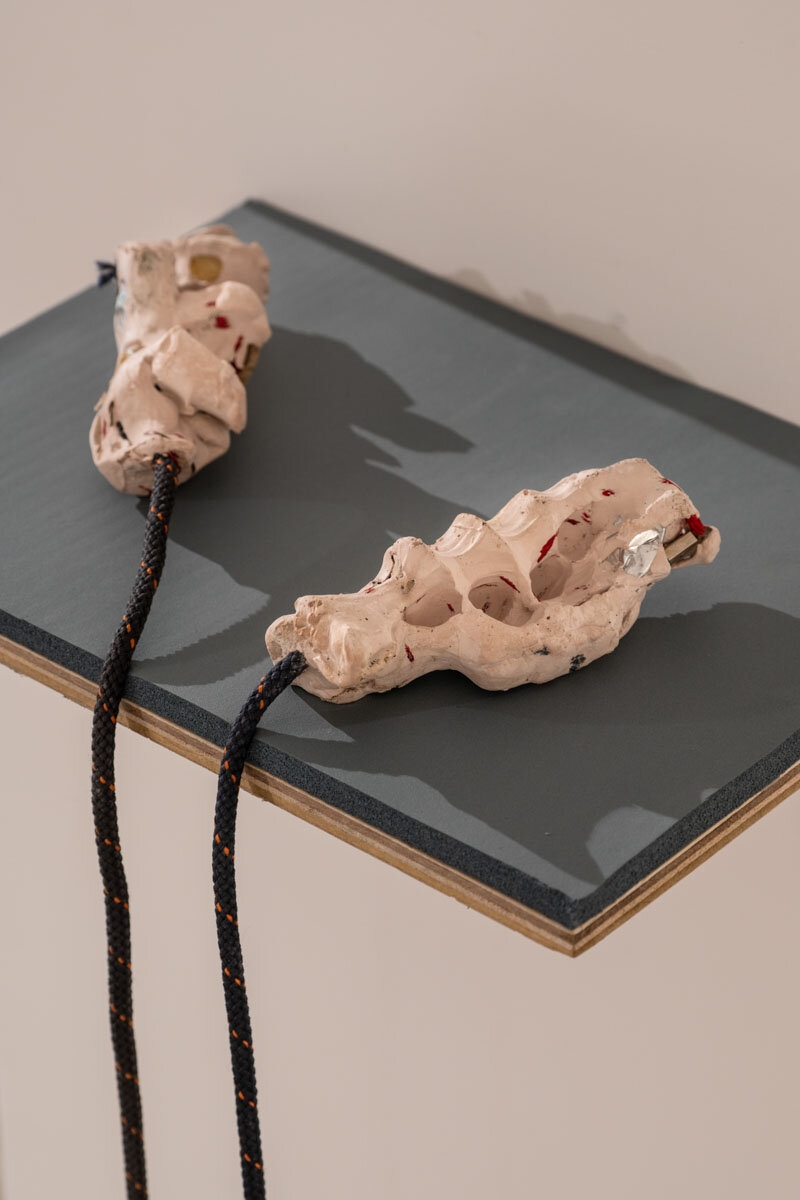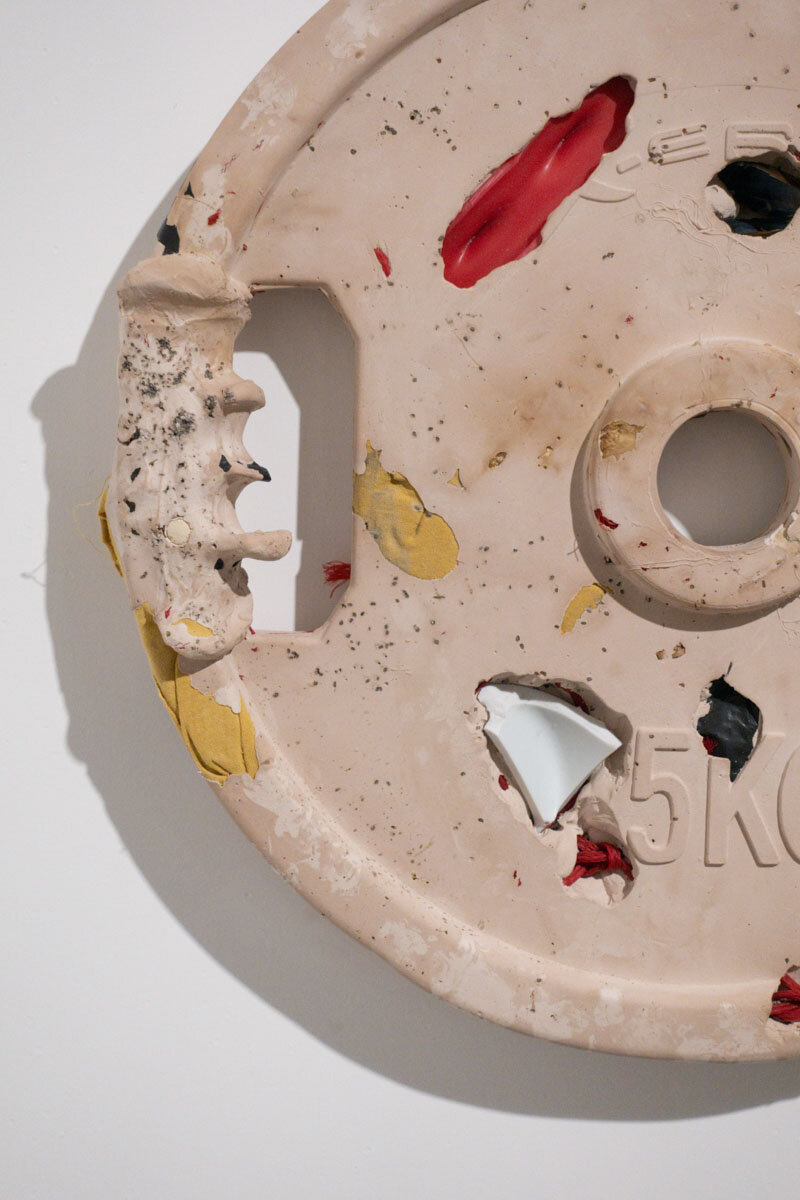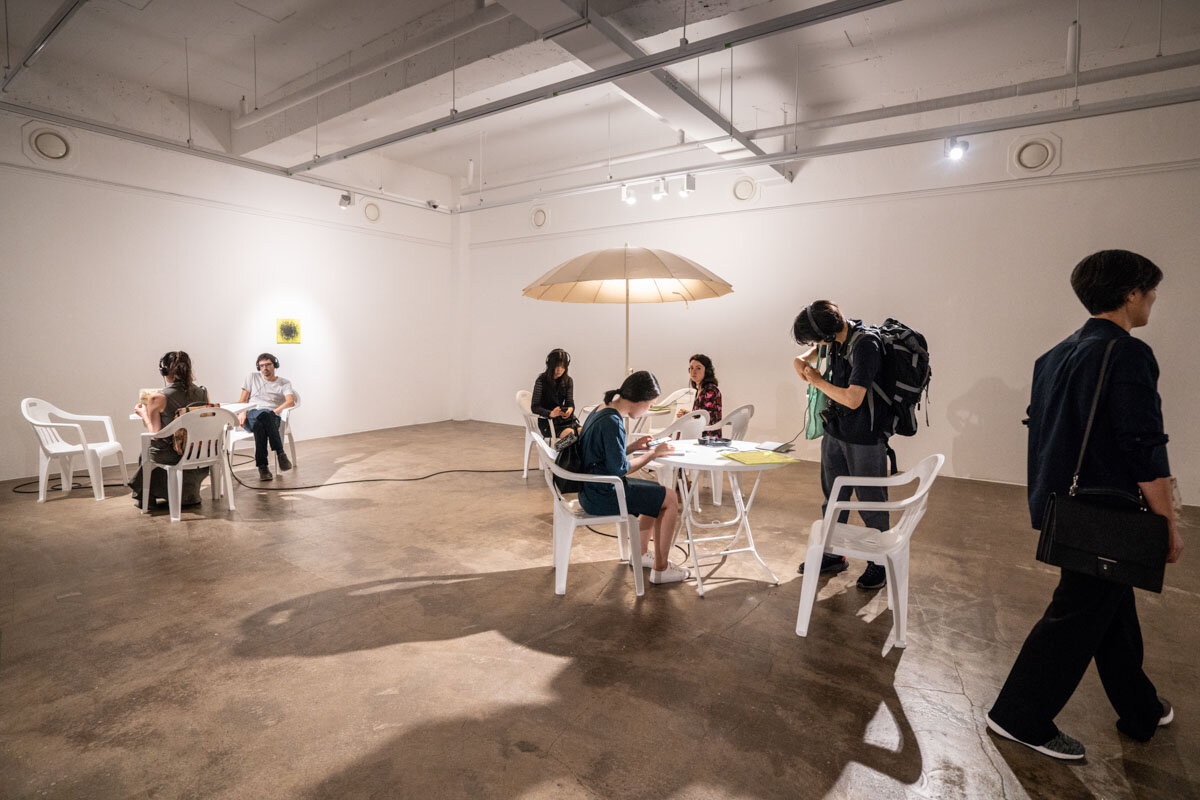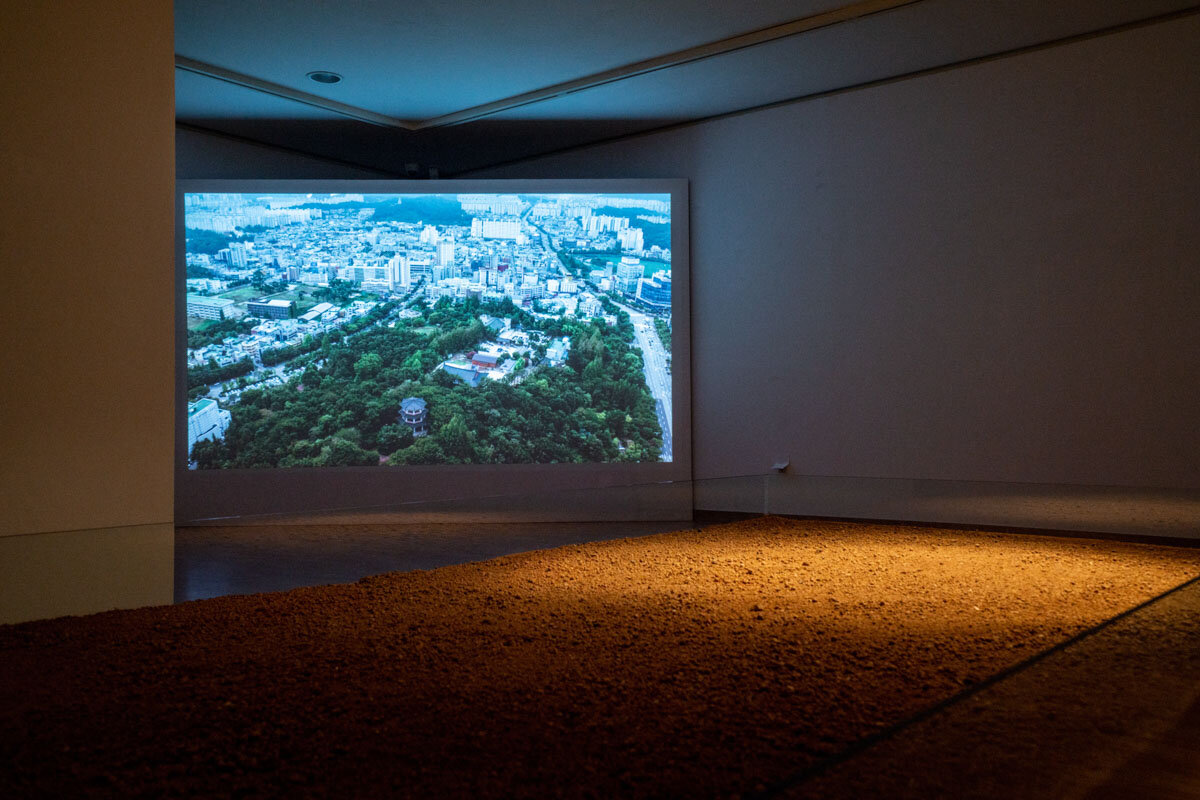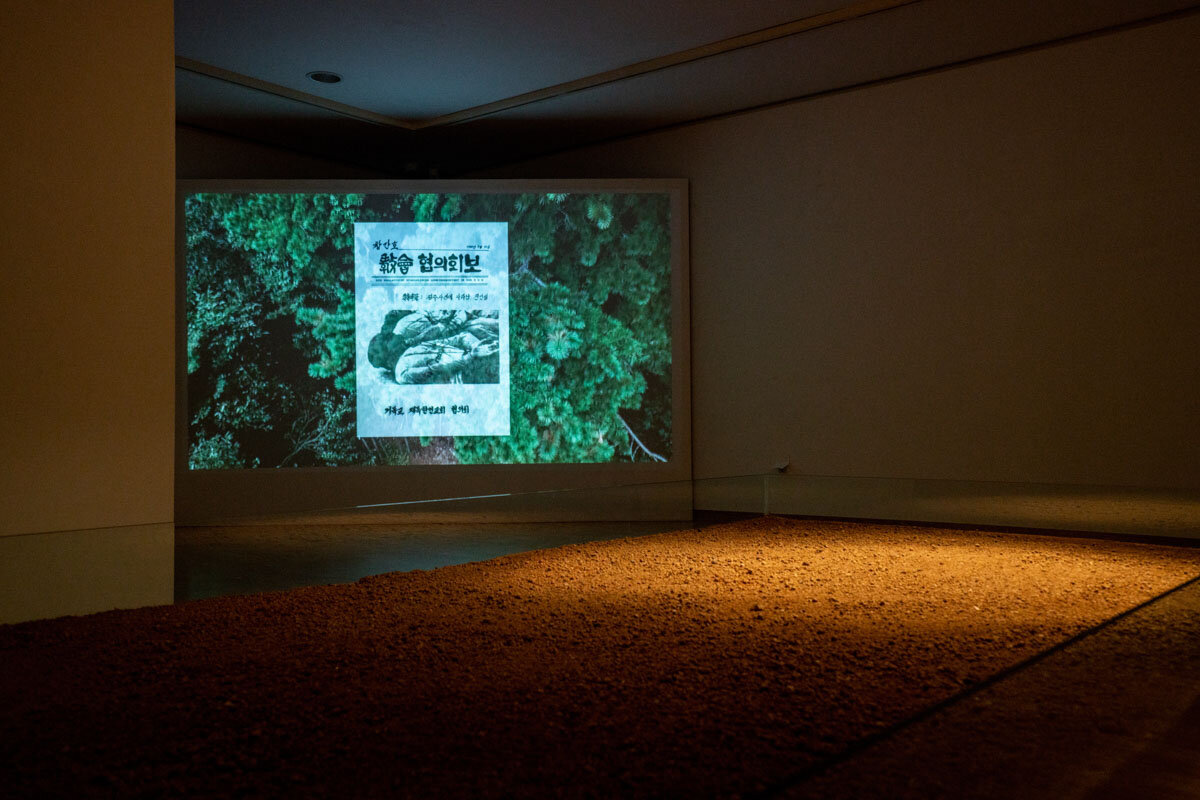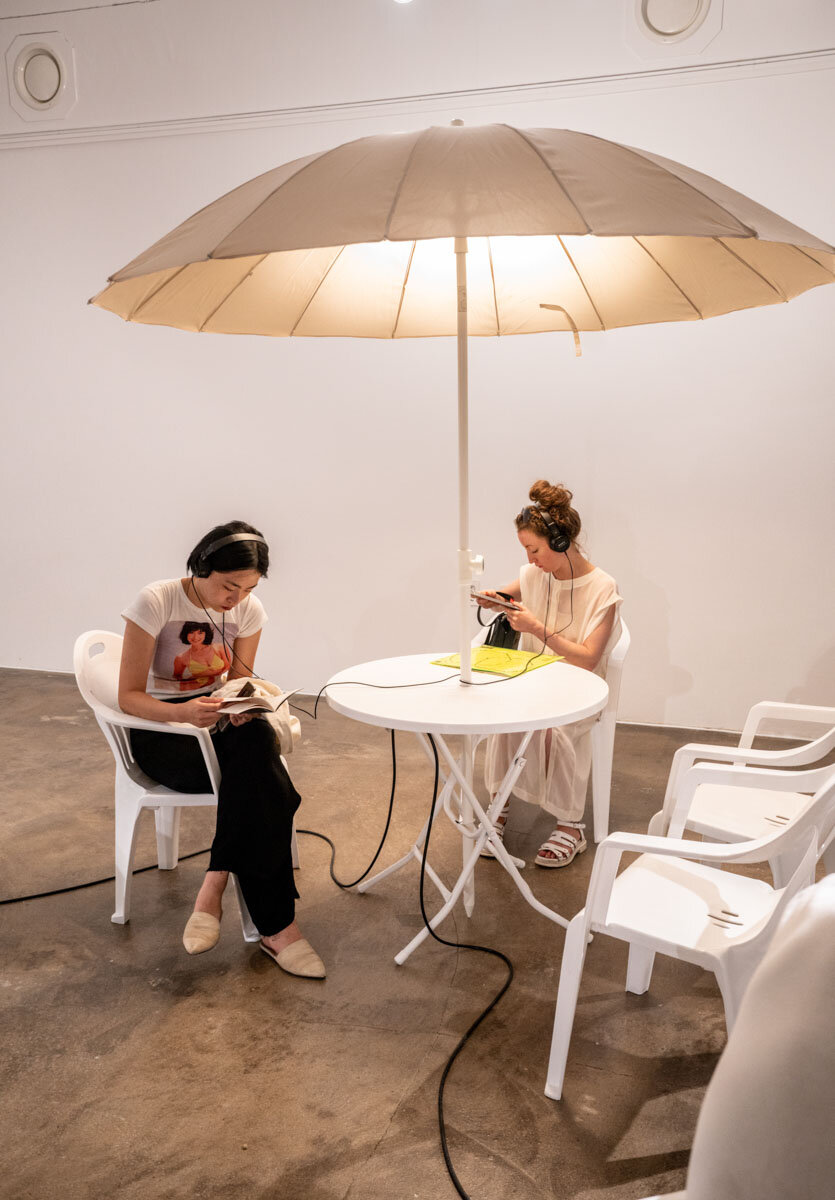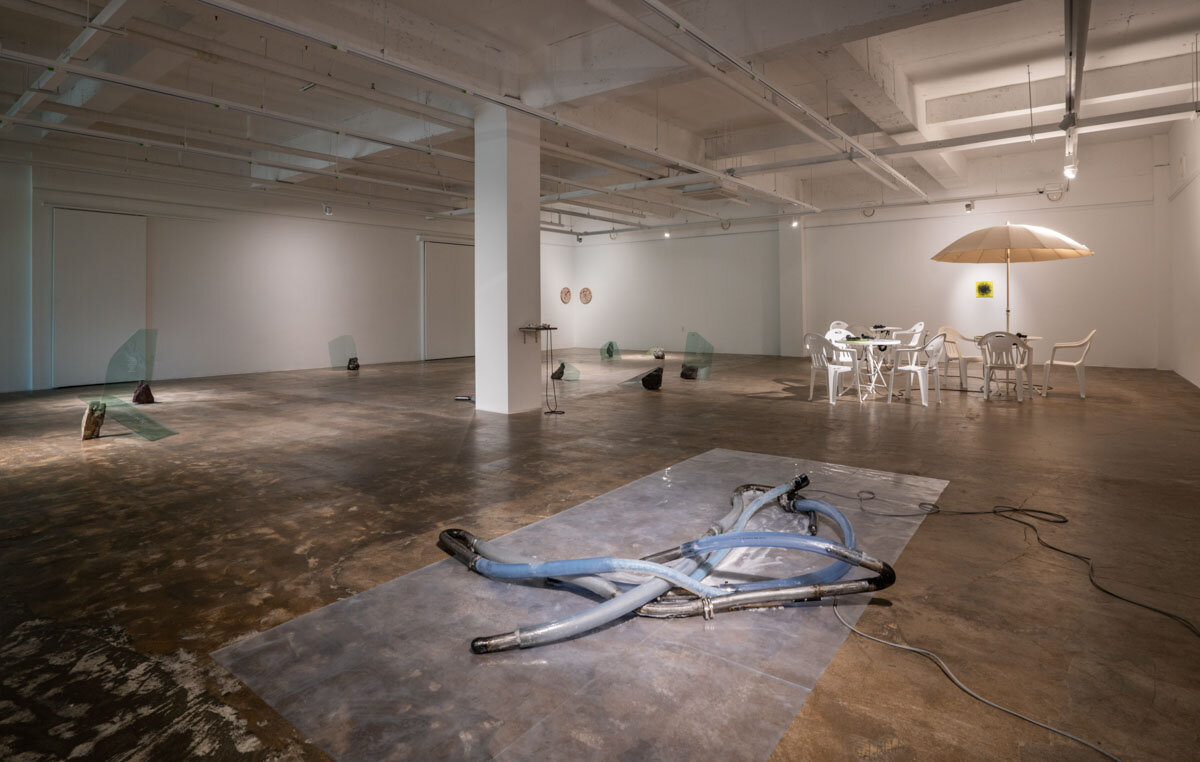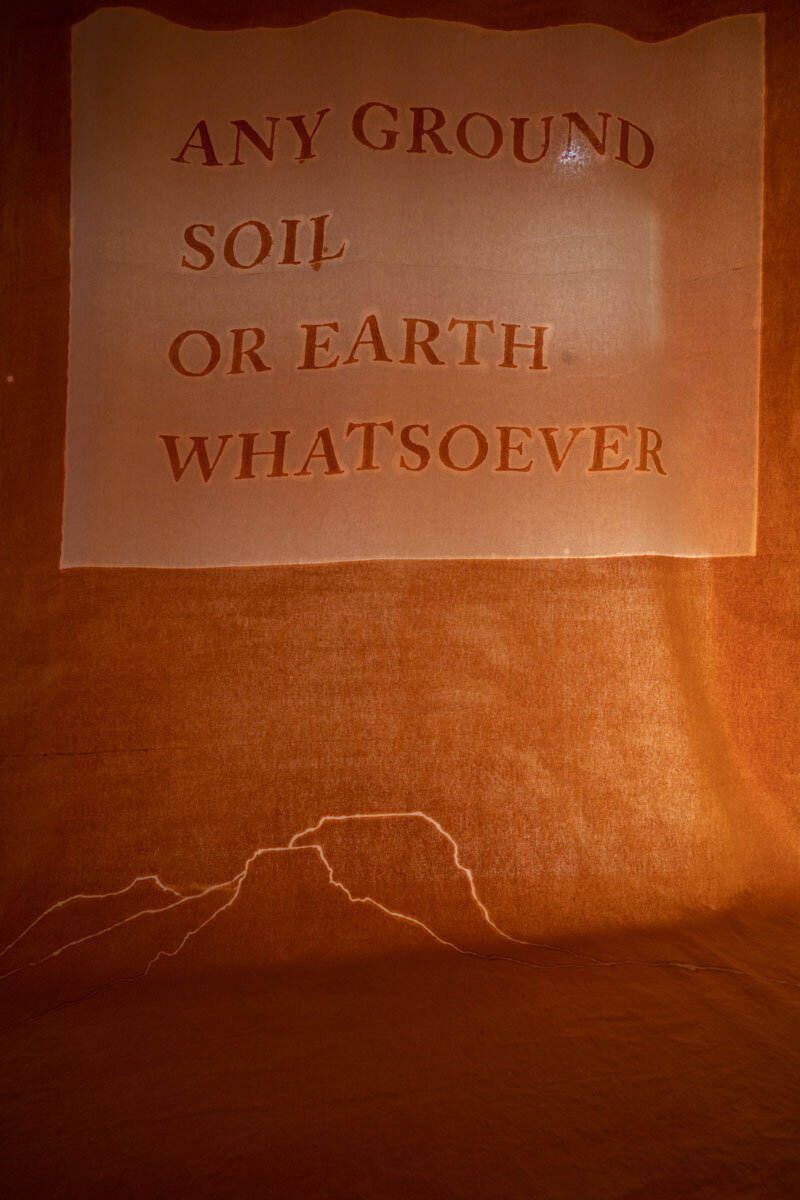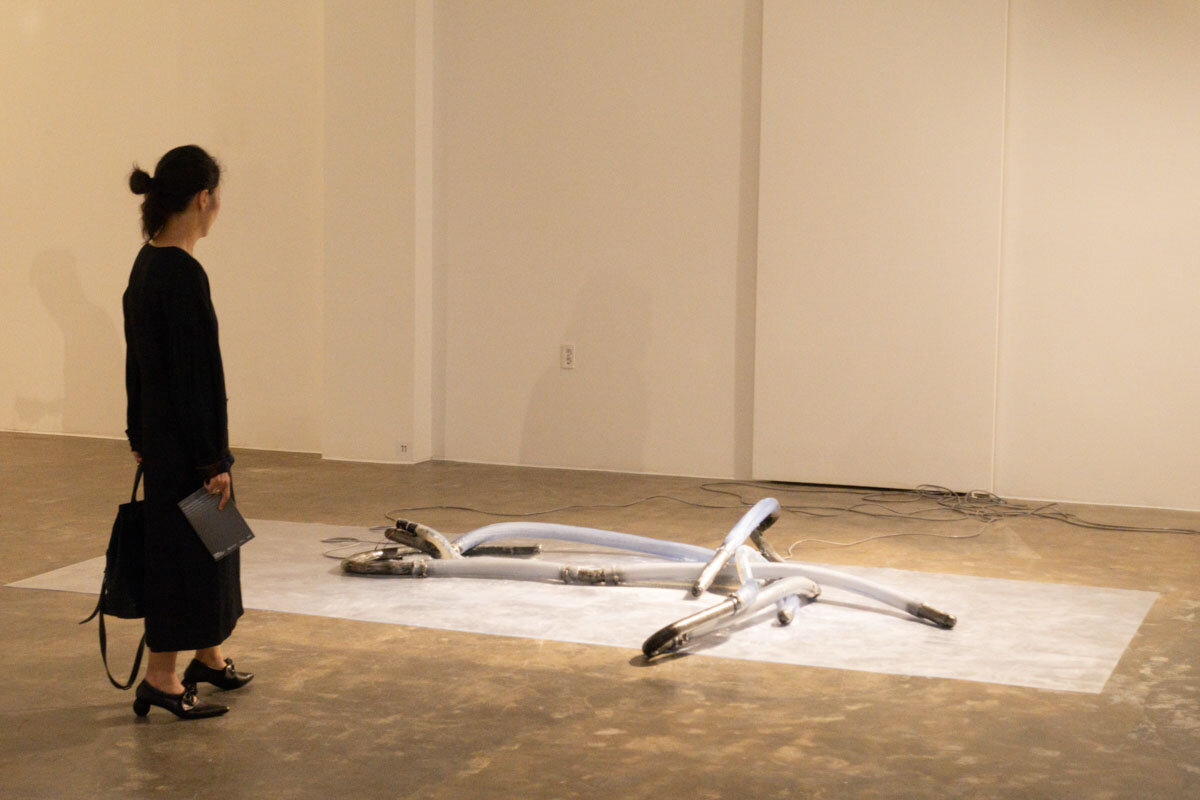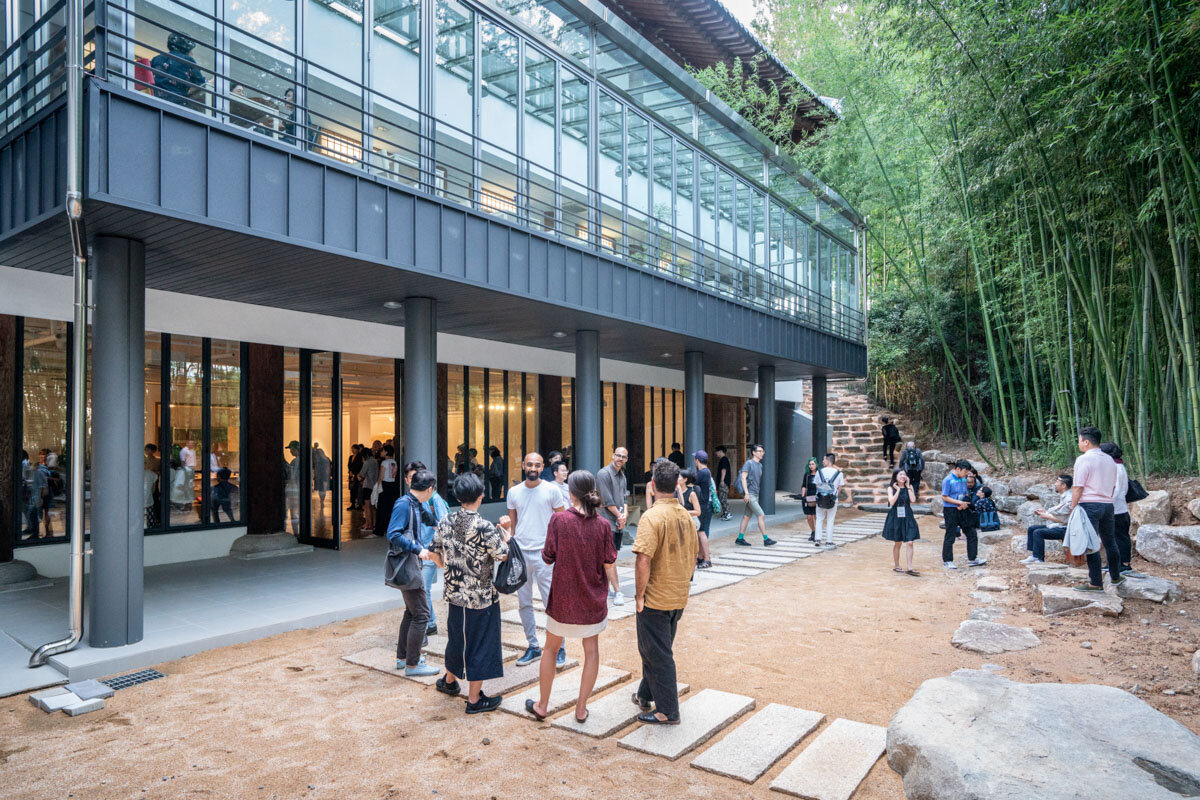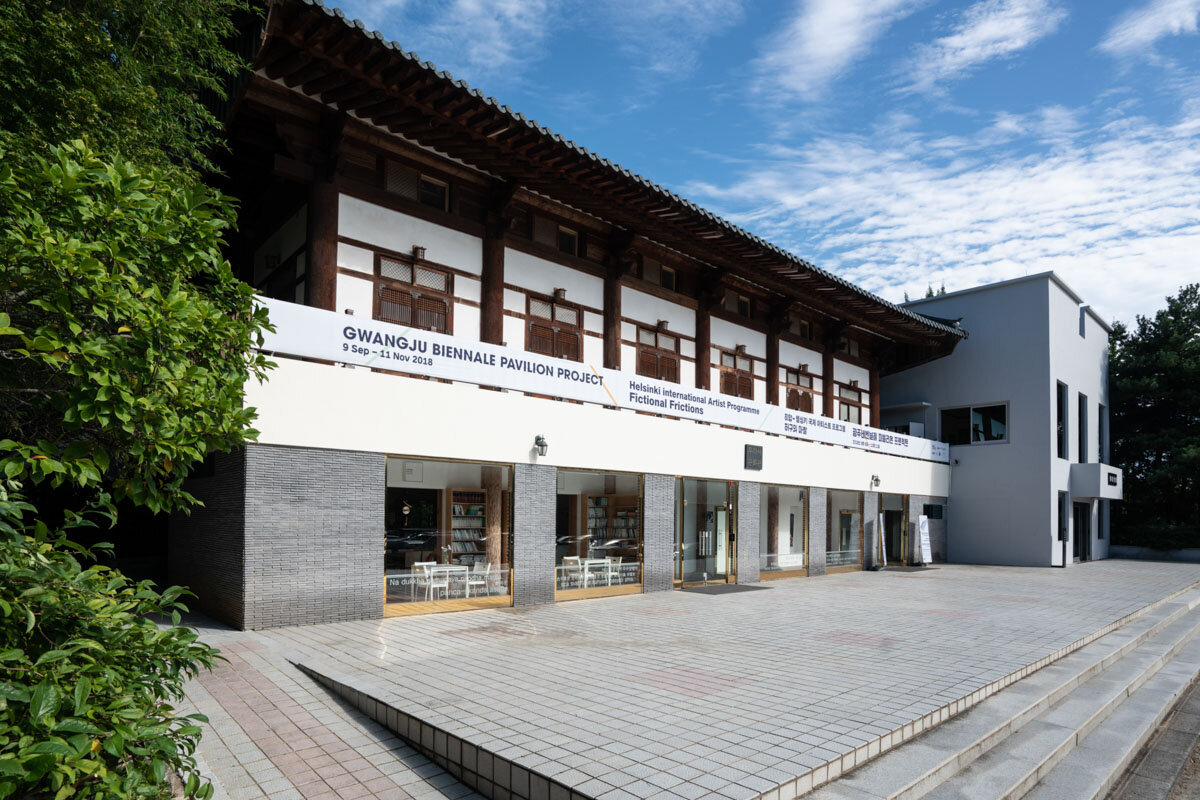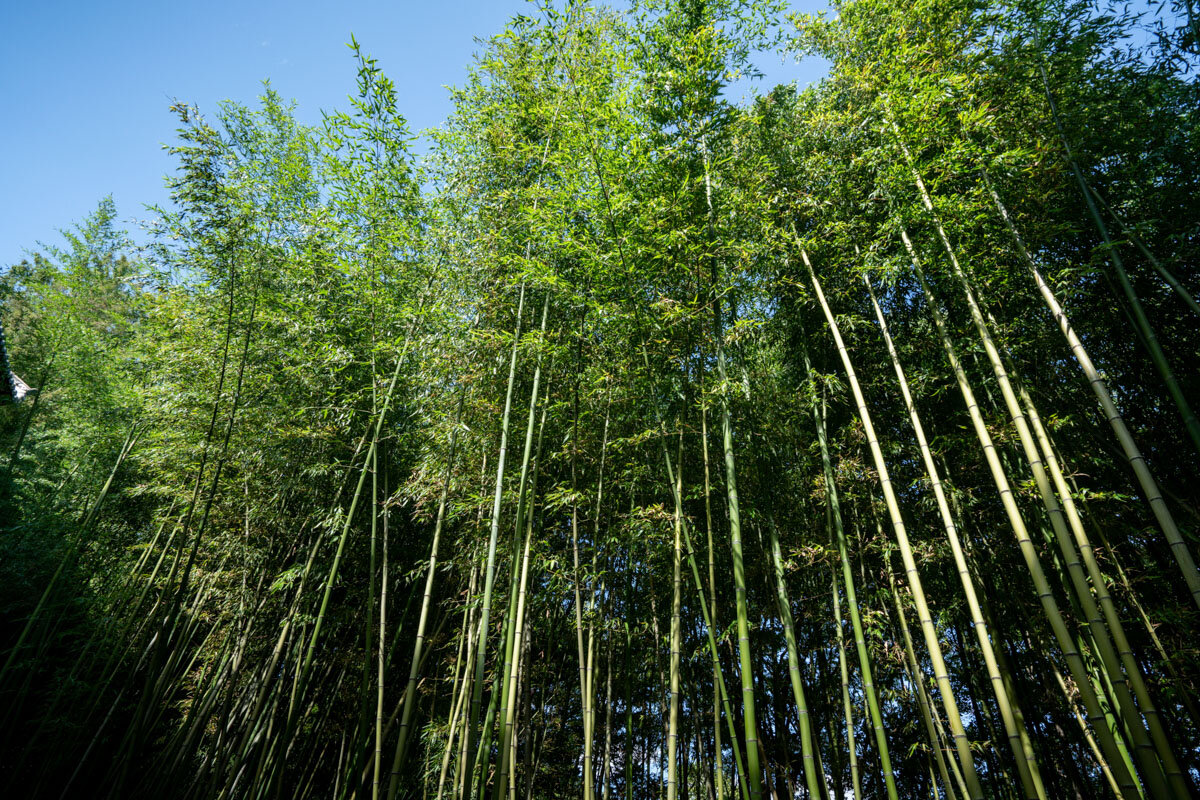boundary-making and fictional frictions
Gwangju Biennale 2018 ‘imagined borders’ / Pavilion Project – HIAP
Jenni Nurmenniemi, September 2018
Boundary-making and Fictional Frictions
Fictional Frictions, the Pavilion Project organised by HIAP – Helsinki International Artist Programme, is an exhibition ecosystem growing on the Mugak Temple grounds. It is an entanglement woven into being in subtle negotiation with the space and through resonances between five works of art made for the occasion. Situated at the Mugak Temple’s gallery spaces, the exhibition consists of new artworks and context-specific re-iterations by artists from South Korea and Finland: Jungju An & Sojung Jun (Black Night), Maelee Lee, Mire Lee, Nestori Syrjälä and Elina Vainio. The exhibition is curated by Jenni Nurmenniemi (HIAP).
The Critical Undercurrents
The exhibition takes its conceptual cues from strands of thought that HIAP has been cultivating with its resident artists, curators, researchers, and writers. The most pronounced of these is the ecological perspective. At HIAP, ecology is not a theme that tackles ‘nature’ or ‘the environment.' Instead, the term refers to the investigation of the biological, economic, and socio-political entanglements of matter and meaning that shape life on Earth into its current forms. (1) This kind of ecological angle challenges the nature / human divide as well as the human-centric values that continue to define nation states and global market economy, despite their apparent fallacies.
Within the international collaboration project Frontiers in Retreat (2013–2018), (2) followed by thenew Post Fossil Transition project (2018–2020)3, HIAP has been developing thinking and practices for more liveable futures after the short-lived era of fossil (fuelled) modernity.(4) These two projects share the intention to dissolve and replace ideas that keep so-called modernised human societies on a collision course with the rest of the biosphere. The task at hand calls for fostering open-ended artistic, intersectional and multidisciplinary approaches.
Ecological critique challenges numerous imaginary borders – divisive forms of thinking that structure humans’ conceptions of the world. From the ecological perspective, ideas such as nations, the binary gender system, and race (to give only a few examples) start to appear associo-political fictions with concrete, and often violent, implications. Imaginary borders forge tensions, frictions, and violence stemming from artificial hierarchies and exclusions.
There will always be irreconcilable differences. Learning to live with difference, as feminist activists and theorists have suggested – from various conflicting standpoints – for nearly 200 years, (5) is the key to everything. What is questioned then here is the boundary-making machine – the mechanisms of ‘othering’ that define the development of modern civilisations and which are inseparable from histories and on-going processes of colonisation.
While acknowledging the concrete and painful frictions created by traditional taxonomies and the borders built upon them, the exhibition Fictional Frictions emphasises their imaginary, ideological, and temporary nature. Boundary-making tends to happen within human societies, but this exhibition creates a temporary situation to challenge this by highlighting co-dependencies andcontinuums instead of ruptures, breaks, and clearly defined borders. Acknowledging thatphenomena are always layered, in flux and mostly beyond human control, is a great starting point to explore this exhibition.
Everything Flows; Nothing Remains (6)
In kaleidoscopic coils of matter and meaning, the artworks in the exhibition address change –transitions of various scales and temporalities. Feminist new materialist thinkers, namely influential feminist theorist and theoretical physicist Karen Barad have inspired the conceptual outline and composition of the exhibition. Barad’s boundary-breaking thinking questions stable categories through concepts such as entanglement, nature-culture continuum, and intra-action. They address the dynamism of the processes in which the world creates itself, in which it ‘becomes’:
In summary, the universe is agential intra-activity in its becoming. The primary ontological units are not “things” but phenomena – dynamic topological reconfigurings / entanglements / relationalities / (re)articulations. And the primary semantic units are not “words” but material-discursive practices through which boundaries are constituted. This dynamism is agency. Agency is not an attribute but the ongoing reconfigurings of the world.(7)
By avoiding fixed positions, strict storylines and the politics of representation in its othering form, the exhibition nurtures reconfigurings. It calls for diverse readings and careful listening to signals of change within the constant hum and rumble of the world. Merging memories, embodied experience and fiction for knowledge- and world-building, the participating artists shake deeplyengrained historiographies and systems of classification.
Their artworks do not necessarily follow the conventions of ecologically oriented or environmental art. Instead, they utilize various tactics to touch upon the memories – or gently shake the collective amnesia – of human subjects who might be separated by physical borders or the passage of time but yet similarly affected by subjugation and violence. The articulation of trauma by a veteran from World War I resonates with the experiences of the survivors of more recent experiences of terror. They also resonate with the violent recent history of Gwangju, and its citizens’ ambiguous struggle to both remember and to be able to get past the horrors of the violently repressed May 18 Democratic uprising of 1980.
Human lives and experiences are never only human. They are always inseparably intertwined with the more-than-human world and its materialities. Hence, in the exhibition unfathomably slow processes occurring in geological (deep) time intertwine with dramatic events that seem to transform societies in an instant. While human bodies go through their cycles of life and death;sand, glass, oil, and plastic are circulating in their rhythms. It is all about the subtle layering of intertwined processes without any clear beginnings or ends. Barad’s words, with which she begins her much-quoted opus, Meeting the Universe Halfway (2007), may give some guidance to this angle into experiencing the world.
“To be entangled is not simply to be intertwined with another, as in the joining of separate entities, but to lack an independent, self-contained existence. Existence is not an individual affair. Individuals do not preexist their interactions; rather, individuals emerge through and as part of their entangled intra-relating. Which is not to say that emergence happens once and for all, as an event or as a process that takes place according to some external measure of space and of time, but rather that time and space, like matter and meaning, come into existence, are iteratively reconfigured through each intra-action, thereby making it impossible to differentiate in any absolute sense between creation and renewal, beginning and returning, continuity and discontinuity, here and there, past and future.”
– Karen Barad (8)
3 Ecological Disquiet and Dissolving Subjects
When discussing big changes in the early 21st century, ecological disquiet cannot be easily bypassed. Climate breakdown disrupts conventional understandings of time and scale, as the most mundane activities of human beings turn into political decisions that have a global impact. Finnish philosophers Tere Vadén and Antti Salminen, thinkers and advocates of the post-fossil transition9, claim that we are witnessing and engaged in the rapid disruption of fossil (fuelled)modernity. While they scrutinize the tension spots of this brief period, they try to develop adept questions and imagine approaches to living meaningful lives beyond fossil fuel dependency. Their endeavour is challenging: during the past 150 years or so burning the fossilized bodies of ancient critters for energy has shaped practically all aspects of lives in the so called technologically advanced societies.
The most sophisticated technologies of humans are entirely dependent on this finite material basis10. Salminen and Vadén point out, how the availability of fossil fuels has allowed a significantnumber of world’s population not to think about energy in their everyday lives, while they have transformed how people live, move, communicate, relate to each other and experience themselves. Fossil modernity has fostered particular political structures, ways of being in the world and sense of selves (fossil subjectivities). In a way, it has made possible the whole outlandish idea (originating from Europe) of independent human subjects detached from the rest of the biosphere.
Changing this idea requires a significant paradigm shift. Facing this challenge is equally a battle of the metaphysical kind as well as a matter of transforming political structures, economic ideas, and everyday habits.
Throughout the exhibition, the personal, the affective, and the aesthetic entwine with the political aspects of life, weaving poetic-political entanglements at the ruins of fossil modernity.
Following the lines of thought of Daisy Hildyard’s brilliant essay The Second Body11, every being has a global presence these days, a second body enmeshed and unequally implicated in a worldwide network of ecosystems. The confusion with the boundaries of our bodies makes itincreasingly difficult to maintain traditional separations between subject and object, internal andexternal, individual and collective:
“Climate change creates a new language, in which you have to be all over the place; you are always all over the place. It makes every animal body implicated in the whole world. Even thepatient who is anaesthetised on an operating table, barely breathing, is illuminated by surgeon’s lamps which are powered with electricity trailed from a plant which is pumping out of its chimneys a white smoke that spreads itself out against the sky. This is every living thing on earth.”12
– Daisy Hildyard
1 ) The description of the world's processes of becoming (in intra-action) as an entanglement, is borrowed from feminist philosopher and theoretical physicist Karen Barad. Her groundbreaking thought has inspired an increasing number of artists and curators across the world in recent years. See, for instance: Barad, K. (2007). Meeting the universe halfway. Quantum physics and the entanglement of matter and meaning. London & Durham. Duke University Press.
2 ) frontiersinretreat.org
3 ) hiap.fi
4 ) Salminen, A., 2018, On the meaning of experimental art in the eye of the anergy storm. In Nurmenniemi, J. & Warr, T. (Eds.) The Midden, 2018, Helsinki, Garret Publications.
5 ) Counted here from the first-wave feminists', or the suffragettes', first public claims for women's rights in the Mid-19th century.
6 ) The Greek philosopher Heraclitus, as quoted by Plato in Cratylus, 402a.
7 ) Barad, K., 2003. Posthumanist performativity. Toward an understanding how matter comes to matter. Signs Vol. 28, No. 3. Gender and Science: New Issues (spring 2003) pp. 801–831. Chicago, The University of Chicago Press. Pp. 818.
8 ) Barad, K., 2007, Meeting the Universe Halfway: Quantum Physics and the Entanglement of Matter and Meaning, Duke University Press, 2007. Pp. ix.
9 ) Some climate change civil movements, such as https://gofossilfree.org/ (nowadays also some major energy companies), might also use the expression 'fossil free' when advocating or advertising energy solutions that are not based on fossil fuels.
10 ) See Salminen, A. & Vadén, T., 2015, Energy and Experience. An Essay in Nafthology. Chicago, MCM Press.
11 ) Hildyard, D., 2017, The Second Body. London, Fitzcarraldo Editions. Pp. 13–14.

